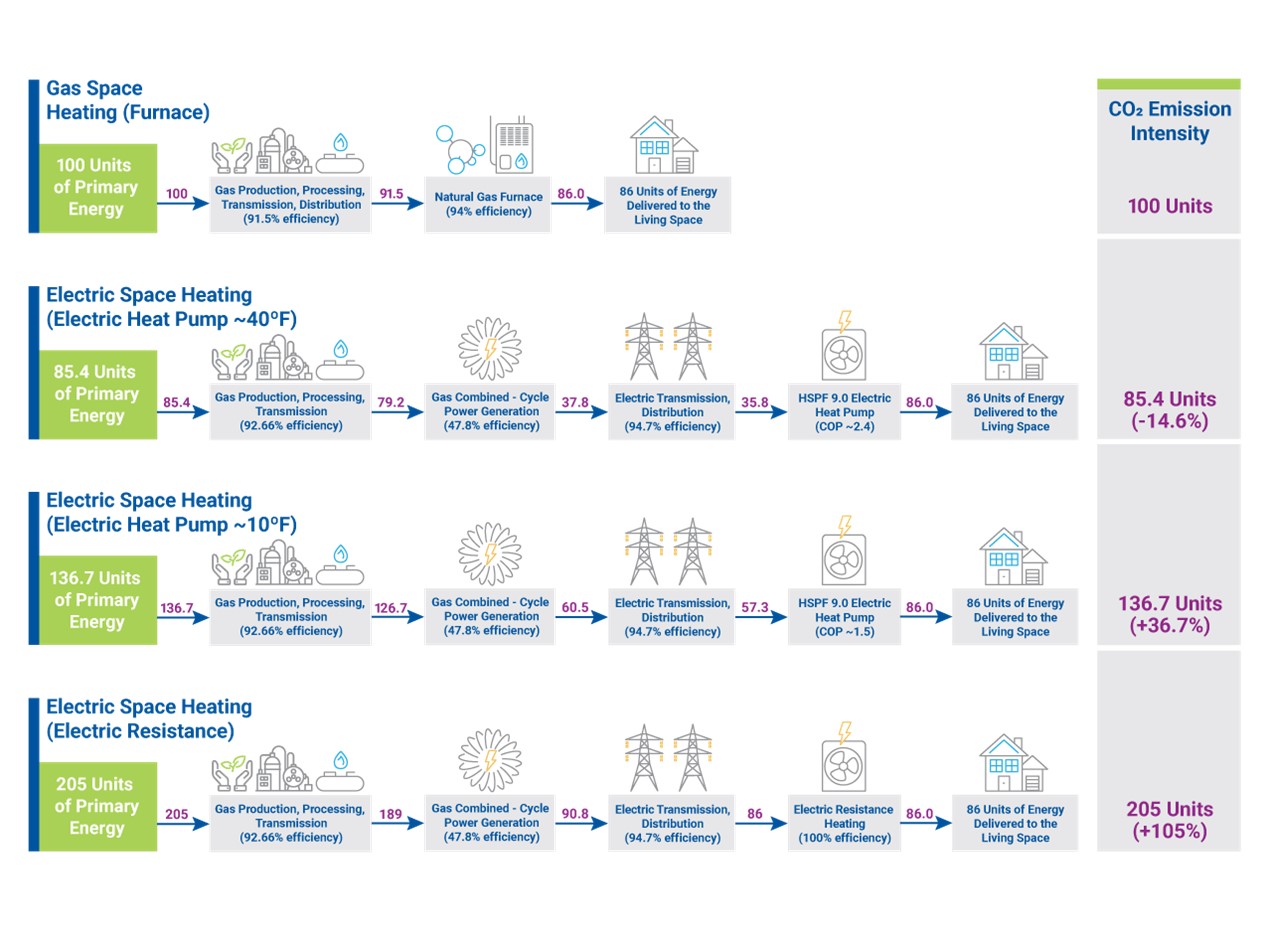Tackling Residential Space Heating Opportunities and Challenges
There are active policy discussions regarding future pathways for reducing greenhouse gas (GHG) emissions. The unique challenges posed by space heating are often not fully appreciated in the discussion of how to reduce GHG emissions in the residential sector. In this report, GTI Energy seeks to address these challenges, examining the current state of space heating energy use and investigating the impacts should space heating across the U.S. be electrified. GTI Energy performed analysis in all 48-contiguous U.S. states examining the impacts of using a 94% efficient gas furnace or a standard HSPF 9.0 electric heat pump for space heating. The results (1) quantify the magnitude of annual energy use and costs in residential space heating; (2) document issues with seasonal electricity generation for space conditioning loads; and (3) quantify GHG emissions for gas and electric space heating across the U.S. The results are available in an interactive data viewer to explore the state-by-state impacts on GHG emissions and annual heating costs for an average single-family home, and on peak electricity demand across the state.
Specific results will vary by state depending on climate, existing market shares for residential gas and electric space heating, and the generation mix, but the following trends are observed:
- Residential space heating loads in the coldest months represent a peak load that would be met by marginal generation if electrified. Winter marginal emission rates are significantly higher than nominal baseload emission rates.
- Marginal generation is generally met through dispatch of gas and coal as renewable generation, such as solar and wind, declines.
- There is a non-linear increase in electricity consumption as temperature decreases for electric space heating. Residential electrification could shift the peak residential electricity demand to January in 94% of states with an average future winter residential electricity demand that is 175% of the future summer electricity demand.
Interactive Data Viewer for Seasonal Residential Space Heating Impacts
Electric heat pump limitations at colder ambient temperatures raise several consumer and energy supplier concerns. Especially as the temperature drops, heat pump efficiencies and capacities likewise drop, leading to significantly higher source energy use than in direct use of natural gas. Heat pumps may even revert to electric resistance heating, further straining the electricity transmission and increasing source energy and emissions. Widespread electrification could result in significantly higher peak-day electric power asset requirements. The graphic below helps illustrate the source energy impacts of electric space heating as the temperature drops. Natural gas combined-cycle generation is chosen as representative of the dispatchable generation used in many states for peak winter electric loads.

Energy Star requirement for gas furnaces in Northern Climates is 95% AFUE.
The efficiency of natural gas production, processing, transmission and distribution includes energy used for these steps in the natural gas system as well as any leaks.
Electric transmission losses are the national average from EPA eGRID2020 data.
Gas combined-cycle power generation is a typical power generation resource used for winter peak electricity loads.
The electric heat pump at 40°F offers about a 15% reduction in source energy compared to a gas furnace.
As the ambient temperature falls, the efficiency and capacity of the heat pump also drops, resulting in a significant increase in the source energy.
In homes without a heat pump or if the heat pump cannot meet the heating demand and reverts to backup heating, electric resistance heating results in a doubling of the source energy compared to gas heating.
Energy Star requirement for air source heat pumps is HSPF ≥8.5
Residential Space Heating Comparison
Data Sources: 2021 State average electric and gas costs and monthly electricity generation mix from DOE-EIA; Analysis performed using GTI Energy Energy Planning Analysis Tool
Learn More
Contact the energy experts today
